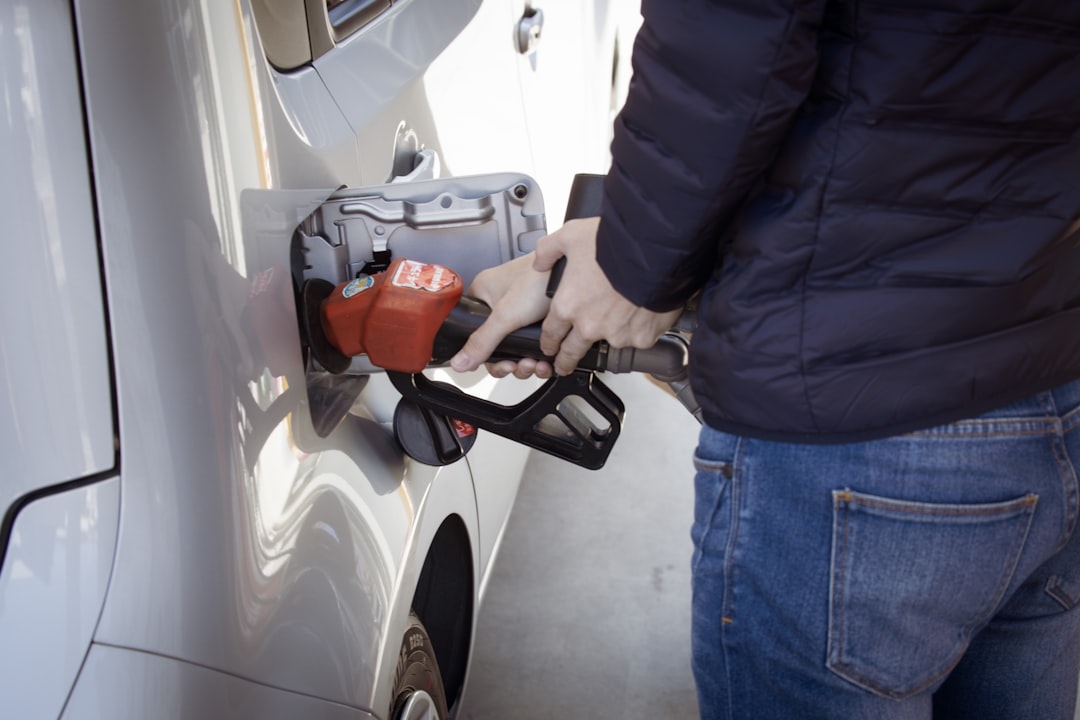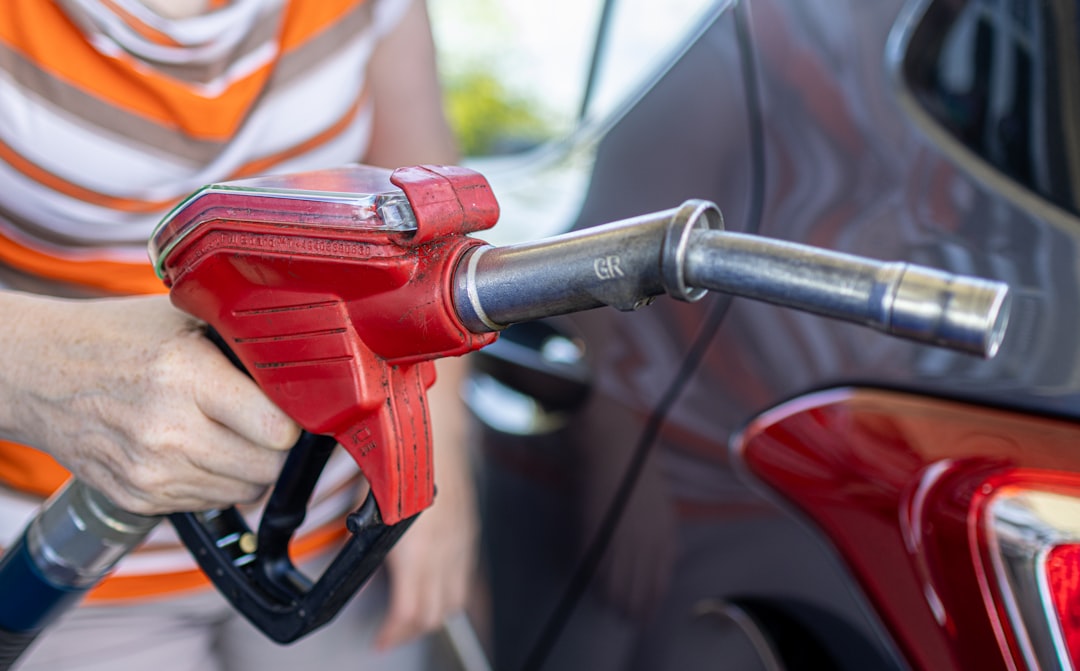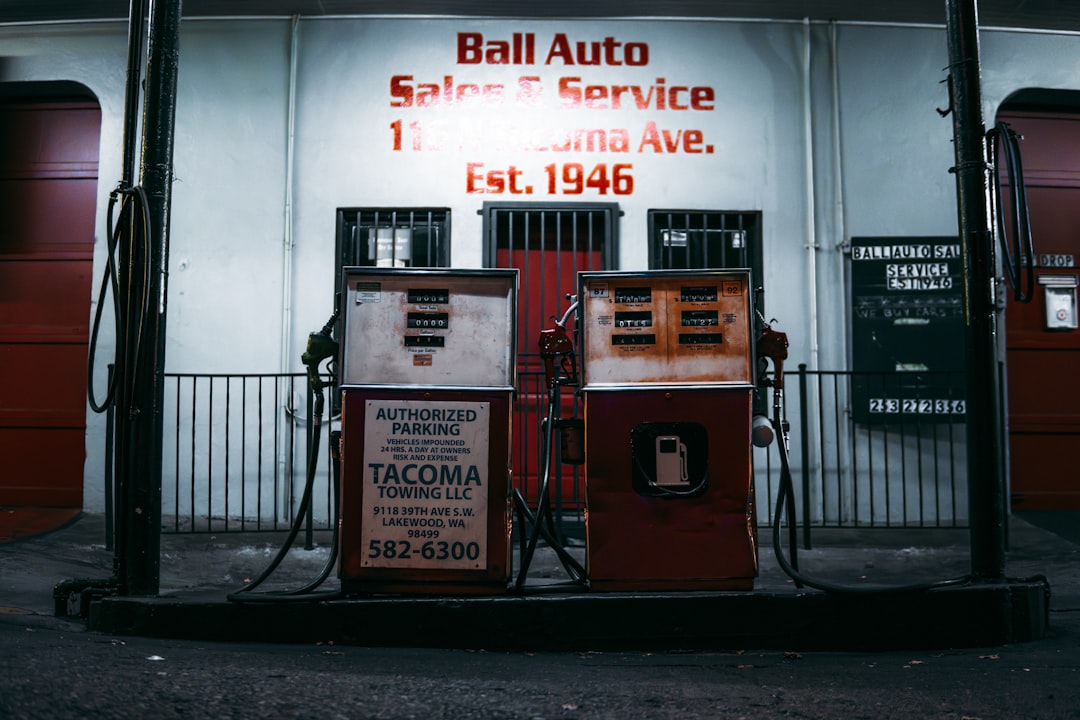

Engage prospects with a scan and streamline customer engagement with FREE QR code marketing tools by Sona – no strings attached!
Create a Free QR CodeFree consultation

No commitment

Engage prospects with a scan and streamline customer engagement with FREE QR code marketing tools by Sona – no strings attached!
Create a Free QR CodeFree consultation

No commitment
Car oil change services face growing pressure to deliver fast, reliable maintenance while adapting to customers' digital-first preferences. With more drivers researching services from their phones, every printed reminder, window sign, or glovebox handout should lead to a measurable digital action. Without clear pathways from physical touchpoints to online booking, providers risk losing high-intent customers who intended to engage but never followed through.
Traditional centers also struggle to attribute results to materials like appointment cards or paper coupons. Managers cannot see which reminders, promotions, or locations generate actual bookings or reviews. QR codes in marketing solve this challenge by turning every surface into a scannable gateway to mobile-friendly scheduling, coupon redemption, loyalty enrollment, and educational content. More importantly, they deliver analytics that reveal what drives action, allowing teams to double down on what works and retire what does not.
By making each interaction scannable and trackable, oil change centers build a connected experience that speeds up scheduling, automates follow-up, and personalizes offers. The result is a smarter storefront and service bay where every scan becomes a measurable signal that improves conversion, loyalty, and revenue.

Many oil change centers miss high-value prospects because interest and intent are not captured at the moment they occur. Customers leave with paper reminders that get lost, or they forget to search for the website once they get home. QR codes link the physical environment to the digital experience, so booking, reviews, and loyalty enrollment can happen in seconds while motivation is high.
Replacing analog workflows makes the impact tangible. Paper punch cards give way to QR-powered loyalty, register receipts drive scan-to-review and scan-to-rebook, and window decals connect to pre-populated appointment forms. With a modern platform like Sona QR, every scan can trigger a real action: booking confirmations, auto-filled feedback forms, coupon claims, or enrollment in a points-based program. This approach streamlines operations, reduces human error, and increases conversion rates.
By automating QR generation and integrating scan data into your CRM, every interaction becomes measurable without adding workload to your advisors. Over time, the data highlights which placements convert best, which messages resonate, and where to focus for further gains in conversion.

Auto service marketers often face a fragmented offline-to-online journey. Drivers see a decal in the corner of the windshield or a poster in the lobby, but there is no instant way to act. Without a direct bridge, leads remain anonymous and high-intent moments fade away. QR codes solve this by translating interest into action on the spot, while maintaining a clear data trail.
QR codes also give managers a level of agility that print alone cannot provide. With dynamic codes, destinations can be swapped as promotions change, hours shift, or inventory updates. This protects your marketing investment and ensures messaging is always relevant. Built-in analytics show which placements perform, so you can prioritize the channels and locations that create bookings, reviews, and repeat visits.
Different QR formats support unique moments in the customer journey. Oil change centers benefit most from formats that simplify booking, communication, and contact capture. With Sona QR, you can create and manage these formats in one dashboard, update them dynamically, and attribute scans back to specific placements.
While Wi-Fi access codes are less common in oil change shops, the same QR approach can enable guest Wi-Fi without staff intervention if you offer a waiting lounge.

The best results come from placing QR codes where motivation peaks. In oil change environments, that means in-bay moments, checkout counters, waiting rooms, and take-home reminders. Each of these placements can be tuned to a specific action and audience, such as booking a return visit, joining rewards, or learning about premium oil options.
To maximize growth, align each QR placement with a single clear call to action. Use language that highlights immediate value, such as “Scan to book your next oil change in 30 seconds” or “Scan for your loyalty bonus.” Test different CTAs across locations to see which combinations deliver the strongest scan-to-conversion rate.

Connected QR journeys reduce friction and support consistent messaging. They also help teams coordinate upsells and retention without relying on memory or manual entry. Consider these high-impact applications that map to common customer interactions.
These use cases deliver measurable lift in repeat visits, add-on services, and review volume. With Sona QR, you can tag each scan to a campaign and view which use cases contribute the most to revenue.
Each QR scan carries rich context: where it happened, which asset was scanned, and what action the customer took next. By strategically deploying different codes across your touchpoints, you can segment audiences automatically and personalize follow-up via intent-driven retargeting that feels relevant rather than generic.
In oil change services, the distinctions are clear. A first-time customer scanning a coupon in a direct mail piece needs education and proof of value. A returning customer scanning a dashboard cling is ready for a frictionless rebook. A fleet manager scanning a lobby poster about maintenance plans signals interest in predictable service and bulk pricing. Treat these audiences differently to maximize conversion and loyalty.
Industry-specific audience examples include first-time visitors versus returning customers, synthetic-only customers versus price-sensitive conventional users, DIY researchers versus convenience-focused drivers, personal vehicles versus fleet accounts, and commuters versus weekend drivers. The richer your segmentation, the more relevant your messaging becomes.
QR codes unify messaging across physical and digital channels, ensuring each touchpoint drives toward a defined next step. When the same campaign runs on exterior windows, lobby posters, direct mail, and social posts, scanning should lead to a consistent destination and experience matched to the customer’s context.
Oil change providers benefit from a connected funnel that starts with awareness, makes booking effortless, and closes the loop with feedback and loyalty. A centralized platform like Sona QR lets you manage codes for every channel, update content without reprinting, and sync scan data to your CRM so nothing slips through the cracks.
QR codes are the offline onramp to your digital marketing engine. They also unlock a layer of data collection across print and in-store channels that were historically opaque, giving you visibility into what genuinely drives bookings.
Successful QR initiatives follow a disciplined process that connects each code to a clear business goal. Oil change centers have seasonal promotions, interval reminders, and upsell moments that can all be orchestrated with QR codes. By standardizing how you plan, design, deploy, and optimize, you will accelerate results and reduce wasted spend.
Use the following steps to align cross-functional teams. Make your goals explicit, your placements thoughtful, and your measurement actionable. If you are just starting out, pick one high-impact use case such as scan-to-book from a windshield sticker, then scale to feedback, reviews, and loyalty once you validate performance.
Define your campaign objective and the action the scan should trigger. For example, focus on appointment booking for lapsed customers, premium oil upgrades for mid-service upsells, or quick review collection at checkout. Align the QR code to a single destination with minimal steps so customers know exactly what happens after the scan. For oil change services, a practical first campaign is scan-to-book from a dashboard reminder with a pre-selected service package.
Choose static or dynamic based on flexibility and tracking needs. Static codes point to fixed destinations and are useful for durable assets such as a general contact card. Dynamic codes are best for campaigns and attributions, allowing destination changes without reprinting, providing analytics, and supporting retargeting. For nearly every marketing and operational use case, dynamic codes in Sona QR will give you the insight and agility you need.
Incorporate your logo, brand colors, and a high-contrast frame that stands out in the shop environment. Place a short, benefit-driven CTA near the code, such as “Scan to book in 30 seconds” or “Scan for your loyalty reward.” Test scannability from typical viewing distances and angles, under bright service-bay lights and lower lobby lighting, and across iOS and Android devices. Confirm that the landing page loads quickly on cellular networks.
Match placements to customer behavior and scanning context. Use dashboard clings and windshield stickers for rebooking, counter displays for reviews and loyalty enrollment, and waiting room posters for education and upsells. Extend reach with direct mail and community signage. For mobile operations, add QR codes to van doors, technician lanyards, and handheld receipts so customers can engage on the spot.
Use Sona QR to monitor scans by time, location, device, and campaign source. Connect destinations to conversion goals such as booked appointments, coupon redemptions, or review submissions. Identify drop-off points and A/B test CTAs, landing pages, or incentive structures. Roll successful creatives to more locations and pause underperformers. Share findings with staff so they can promote the best-performing offers during service.
Engagement is only valuable if you can connect it to business outcomes. For oil change centers, that means knowing whether a scan becomes a booked appointment, an add-on service, or a positive review that drives referral traffic. Traditional print cannot provide this visibility, and even basic QR tools stop at scan counts without linking to revenue.
Sona QR and Sona.com give you end-to-end insight. You can attribute scans to specific placements, merge them with customer profiles in your CRM, and see how engagement progresses from first scan to purchase and repeat visits. These insights inform budget allocation, campaign design, staffing priorities, and upsell strategies.
By treating scans as the first step in a measurable journey, you transform QR codes from a novelty into a performance channel that earns its place in your marketing mix.
Sustained results come from dialing in your placements, CTAs, and post-scan workflows. The best-performing shops make scanning part of the service rhythm and keep destinations focused on the next best action for each customer segment. Small adjustments often deliver outsized gains.
When in doubt, simplify. Ask for one action per scan, reduce form fields, and load fast mobile pages. Tie QR activity to automation, so every scan triggers something valuable: a scheduled appointment, a banked loyalty reward, an instant review link, or a relevant upsell.
You can generate and track your first QR codes for free with Sona QR. Start creating QR codes for free, create campaigns for your top use cases, and start measuring results in minutes.

Closing the gap between generic outreach and tailored conversion is where QR programs shine. Oil change providers that treat QR scans as the start of a conversation see measurable gains in booking efficiency, upsell acceptance, and review volume. Consider these illustrative examples that you can adapt to your market and brand; see a creative example of a QR sticker linking to a job.
Teams that experiment with placements and incentives quickly learn what moves the needle. Some shops find that a small loyalty boost on the second visit accelerates retention, while others discover that educational scans in the waiting area lead to higher acceptance of synthetic packages.
Even strong concepts can falter if codes are hard to find or destinations are slow and confusing. Avoid the most common mistakes by prioritizing visibility, clarity, and speed. Train staff to integrate scanning into conversations and make sure every scan requests only one simple action.
Iterate continuously. Treat every code as a mini-experiment with a hypothesis and a goal, such as “counter display drives 8 percent review conversion.” When you find a winner, replicate it across similar placements and refine the CTA to push results even higher.
QR codes are reshaping how car oil change services capture demand, convert interest, and retain customers. They solve persistent challenges around anonymous foot traffic, outdated print materials, and scattered attribution. By making each touchpoint measurable, you gain the visibility needed to allocate spend, train staff, and optimize messages that drive real outcomes.
Think of each scan as a data-backed connection. It turns a windshield sticker into a booked appointment, a lobby poster into an informed upsell, and a receipt into a predictable flow of reviews. With dynamic codes, integrated analytics, and a clear strategy, you can transform routine service interactions into reliable engines of growth.
Sona QR provides the foundation to execute this playbook at scale: create dynamic codes for every placement, manage destinations from one dashboard, and sync scan data to your CRM. Sona.com extends the value by connecting scans to revenue with identity resolution and multi-touch attribution, supported by this offline attribution guide. Start small with one high-impact use case, measure the lift, then scale across your operations. In a competitive market where speed and simplicity win, QR-enabled workflows help you turn every moment of interest into a moment of action.
QR codes have transformed car oil change services from simple transactions into powerful, data-driven customer engagement tools. Whether it’s attracting new clients, streamlining appointment bookings, or delivering personalized service reminders, QR codes replace outdated methods with instant, mobile-friendly connections that boost customer loyalty and drive repeat business. Imagine knowing exactly which promotions bring in the most customers and being able to optimize your marketing on the fly.
With Sona QR, you can create dynamic, trackable QR codes in seconds, update campaigns instantly without reprinting, and link every scan directly to revenue growth. This means no missed opportunities—just smarter, more effective marketing that turns every interaction into a conversion.
Start for free with Sona QR today and transform your car oil change services into a seamless, profitable experience that keeps customers coming back.
QR codes connect physical touchpoints to digital actions, enabling fast booking, coupon redemption, loyalty enrollment, and feedback collection while providing analytics to optimize marketing and operations.
Dynamic QR codes allow real-time content updates, track scans by location and source, enable personalized offers, and provide measurable insights for optimizing campaigns without reprinting materials.
Place QR codes in high-motivation areas such as dashboard clings, windshield stickers, checkout counters, waiting rooms, exterior signage, direct mail, and community events to encourage bookings, reviews, and loyalty.
QR codes placed at checkout or exit points can link to quick surveys or review platforms, increasing feedback volume and allowing managers to address issues in real time.
Useful QR formats include web links for booking and information, feedback forms, vCards for contact sharing, SMS or email pre-filled messages, promotional coupons, and app download links.
QR codes provide scan analytics by time, location, device, and campaign source, enabling attribution of bookings, reviews, and coupon redemptions to specific marketing assets.
Choose a clear use case, select static or dynamic QR codes, design and test for visibility and speed, deploy across high-impact locations, and track performance to optimize results.
Each QR scan captures context such as location and intent, allowing segmentation by customer type and behavior to deliver personalized follow-up offers and increase conversion.
Integrating QR scan data with CRM enriches customer profiles, automates reminders and loyalty programs, and connects offline engagement to revenue for better marketing decisions.
Avoid placing codes in hard-to-see areas, ensure landing pages load quickly with simple actions, train staff to promote scanning, and automate post-scan engagement to maximize participation.
Use Sona QR's trackable codes to improve customer acquisition and engagement today.
Create Your FREE Trackable QR Code in SecondsJoin results-focused teams combining Sona Platform automation with advanced Google Ads strategies to scale lead generation

Connect your existing CRM

Free Account Enrichment

No setup fees
No commitment required

Free consultation

Get a custom Google Ads roadmap for your business






Launch campaigns that generate qualified leads in 30 days or less.
